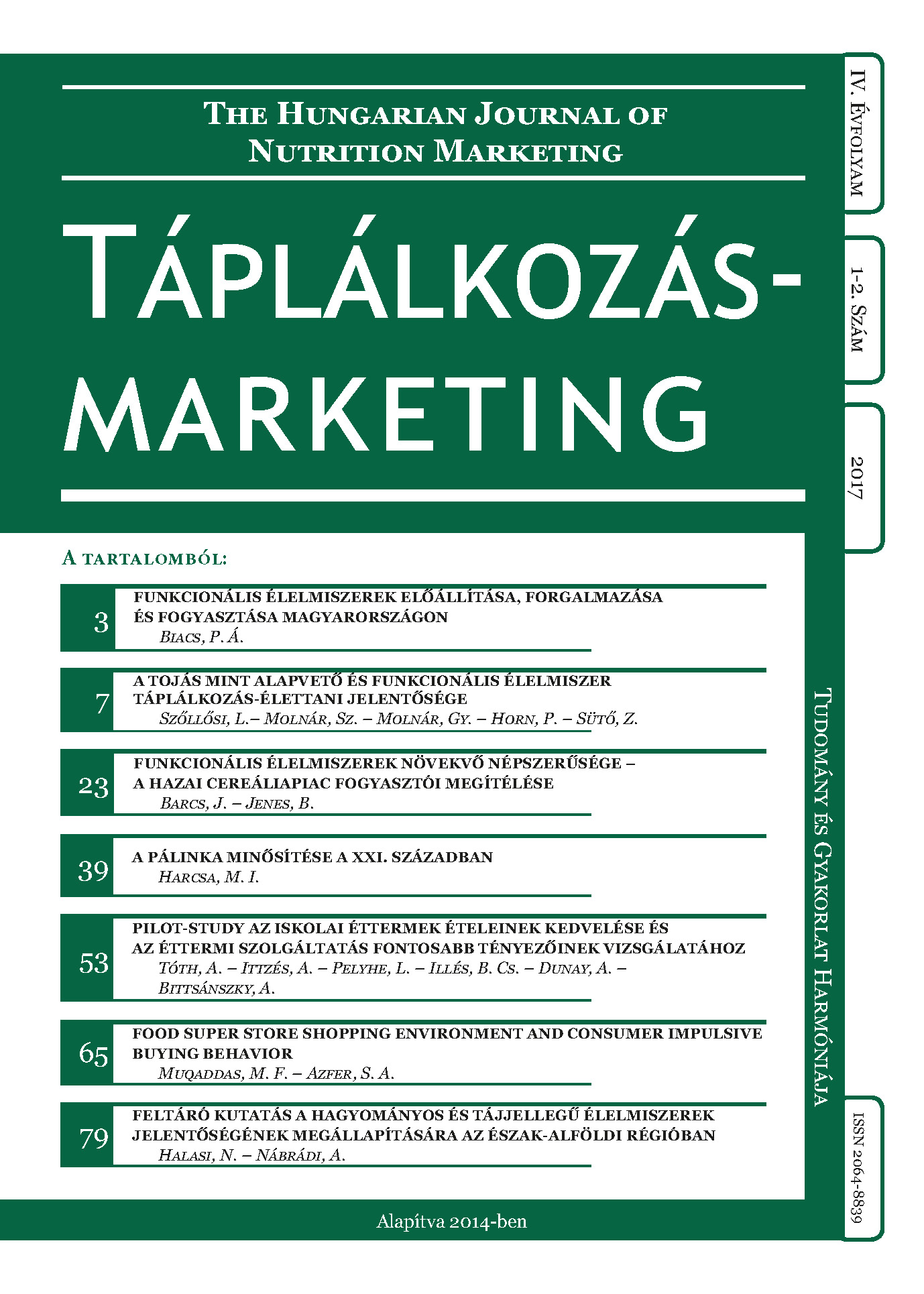Pilot-study for the Investigation of School Meals’ Preference and Main Factors of Restaurant Service
Authors
View
Keywords
License

This work is licensed under a Creative Commons Attribution-NoDerivatives 4.0 International License.
How To Cite
Abstract
In Hungarian public educational institutions (nurseries, kindergartens, primary and secondary schools) it is compulsory to provide food for schoolchildren at least by one meal per day. Schoolchildren represented 14% of the total population of Hungary in 2016. Although school catering is compulsory task for educational institutions, many students refuse this service, because of food intolerances or based on external reasons such as „I don’t like’, ”it is not tasty” or because of negative opinions and rumours about school catering services. Surveys have already been conducted in some countries on the acceptance of school catering services in order to explore the reasons of the negative experiences, but in Hungary, our research was the first in this topic. Our main goal was to explore the acceptance level of the school catering services and their meals in the sample of schools in Budapest. The first step of our research was to launch a pilot study, where 202 students and teachers of five schools in Budapest filled a questionnaire. The most preferred meals of the students were roasted and fried meats (they would like to have these meals more frequently), and cakes/desserts. The least preferred meals were pottage, and simple soups, which they would like to consume less frequently. Teachers preferred healthier food, e.g. fish, stewed or grilled vegetables. In almost half of the different meal types, a significant difference was detected between the answers of teachers and students. Noodle dishes, cakes and desserts were preferred at significantly higher level by the students. The different characteristics of the meals (taste, aroma, nutritional value, temperature, serving style) were assessed as significantly less important by the students than by teachers. Food hygiene, healthy food and diversity of meals were assessed equally well by the two respondent groups. Both respondent groups indicated that adapting to the individual needs of the consumers is inadequate.
JEL codes: D12, L83


 https://doi.org/10.20494/TM/4/1-2/5
https://doi.org/10.20494/TM/4/1-2/5





